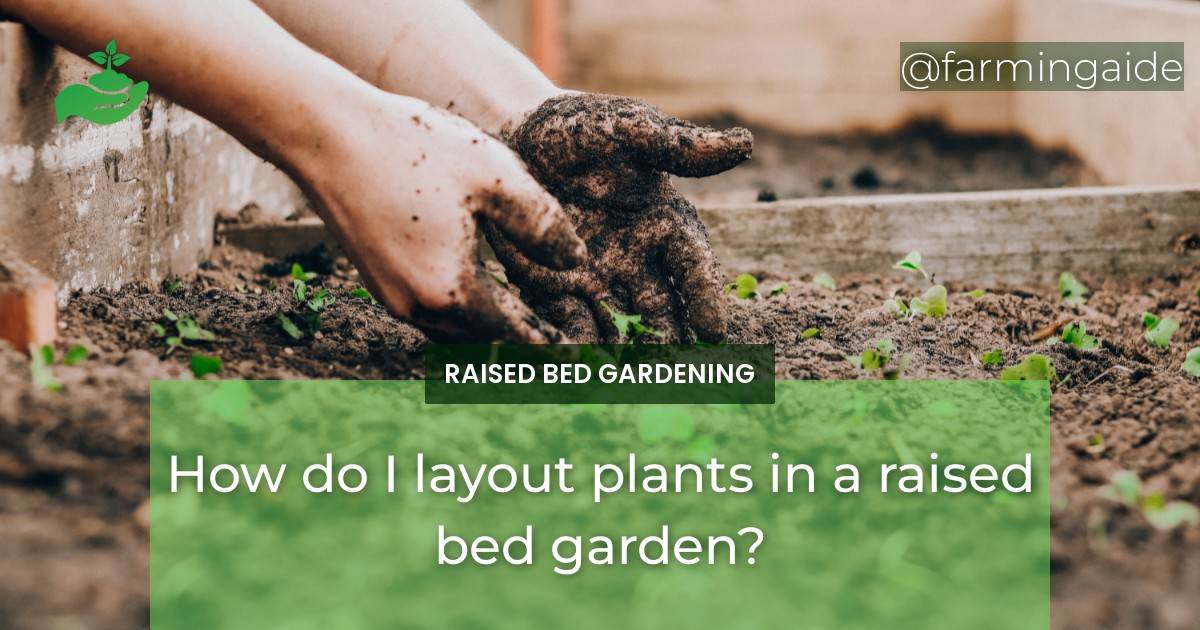Raised bed gardening is a popular method of gardening that involves planting in a raised bed that is filled with soil and compost. These beds are often easier to maintain and can produce a higher yield of vegetables and flowers than traditional gardening methods. When it comes to laying out plants in a raised bed garden, there are several factors to consider to ensure a bountiful harvest. This article will cover some tips and tricks for arranging plants in a raised bed garden to optimize growth, including plant spacing, companion planting, crop rotation, vertical gardening, container gardening, watering and irrigation, and pest management.
Determining Plant Spacing
The spacing of plants in a raised bed garden is crucial to their growth and success. If plants are too close together, they can compete for nutrients, water, and sunlight, which can lead to stunted growth and a lower yield. Conversely, if plants are too far apart, there may be wasted space that could be used for additional plantings. The following are some general guidelines for plant spacing in a raised bed garden:
- Small plants, such as herbs and lettuce, should be spaced 4-6 inches apart.
- Medium-sized plants, such as peppers and broccoli, should be spaced 12-18 inches apart.
- Large plants, such as tomatoes and cucumbers, should be spaced 24-36 inches apart.
It’s important to note that these are just general guidelines, and plant spacing may vary depending on the specific type of plant and its growth habit. For example, vining plants, such as squash and melons, may require more space than other plants due to their tendency to sprawl.
Companion Planting
Companion planting is the practice of planting different crops together that benefit each other in some way. For example, some plants may repel pests that can damage other nearby plants, while others may provide shade or support for climbing plants. Companion planting can be especially beneficial in a raised bed garden, where space may be limited. Some examples of compatible plant pairs for a raised bed garden include:
- Tomatoes and basil
- Carrots and onions
- Peppers and marigolds
ALSO READ
Crop Rotation
Crop rotation is the practice of growing different crops in the same area over a period of several years to prevent soil-borne diseases and pests from building up in the soil. In a raised bed garden, crop rotation can be especially important since the same soil is used year after year. A sample crop rotation plan for a raised bed garden might look something like this:
- Year 1: Tomatoes, peppers, and eggplant
- Year 2: Beans, peas, and lettuce
- Year 3: Squash, cucumbers, and melons
Vertical Gardening
Vertical gardening is the practice of growing plants on a trellis or other support structure to maximize space and improve air circulation. This can be especially useful in a raised bed garden, where space may be limited. Some examples of different trellising methods for vining plants include:
- Stakes and cages for tomatoes
- Tripods for beans and peas
- Arbors for grapes and other climbing plants
ALSO READ
Container Gardening in Raised Beds
Container gardening involves growing plants in containers instead of directly in the soil. This can be a useful technique in a raised bed garden, especially for plants that may spread out or take up a lot of space. Some plants that are suitable for container gardening in raised beds include:
- Herbs
- Strawberries
- Salad greens
Watering and Irrigation
Proper watering and irrigation is essential for the success of a raised bed garden. Overwatering can lead to root rot and fungal diseases, while underwatering can lead to stunted growth and a lower yield. Some general guidelines for watering and irrigation in a raised bed garden include:
- Water deeply and infrequently to encourage deep root growth.
- Consider using a drip irrigation system or soaker hoses to conserve water.
Pest Management in Raised Beds
Common pests that may affect plants in a raised bed garden include aphids, mites, and caterpillars. There are several natural pest management methods that can be used to control these pests, including companion planting, beneficial insects, and handpicking. It’s important to identify and treat pests early to prevent them from causing extensive damage.
What are the Best Plant Layouts for Raised Bed Gardens with Trellises?
When incorporating trellises in raised beds, the best plant layouts for raised bed gardens include placing vining plants like tomatoes, cucumbers, and beans near the trellises to allow them to climb and maximize space. Additionally, planting low-growing, sun-loving plants around the base of the trellises helps to optimize the raised bed’s layout.
Conclusion
When it comes to laying out plants in a raised bed garden, there are several factors to consider to ensure a bountiful harvest. By following the tips and tricks outlined in this article, you can optimize your raised bed garden layout and enjoy a plentiful harvest of vegetables and flowers.


